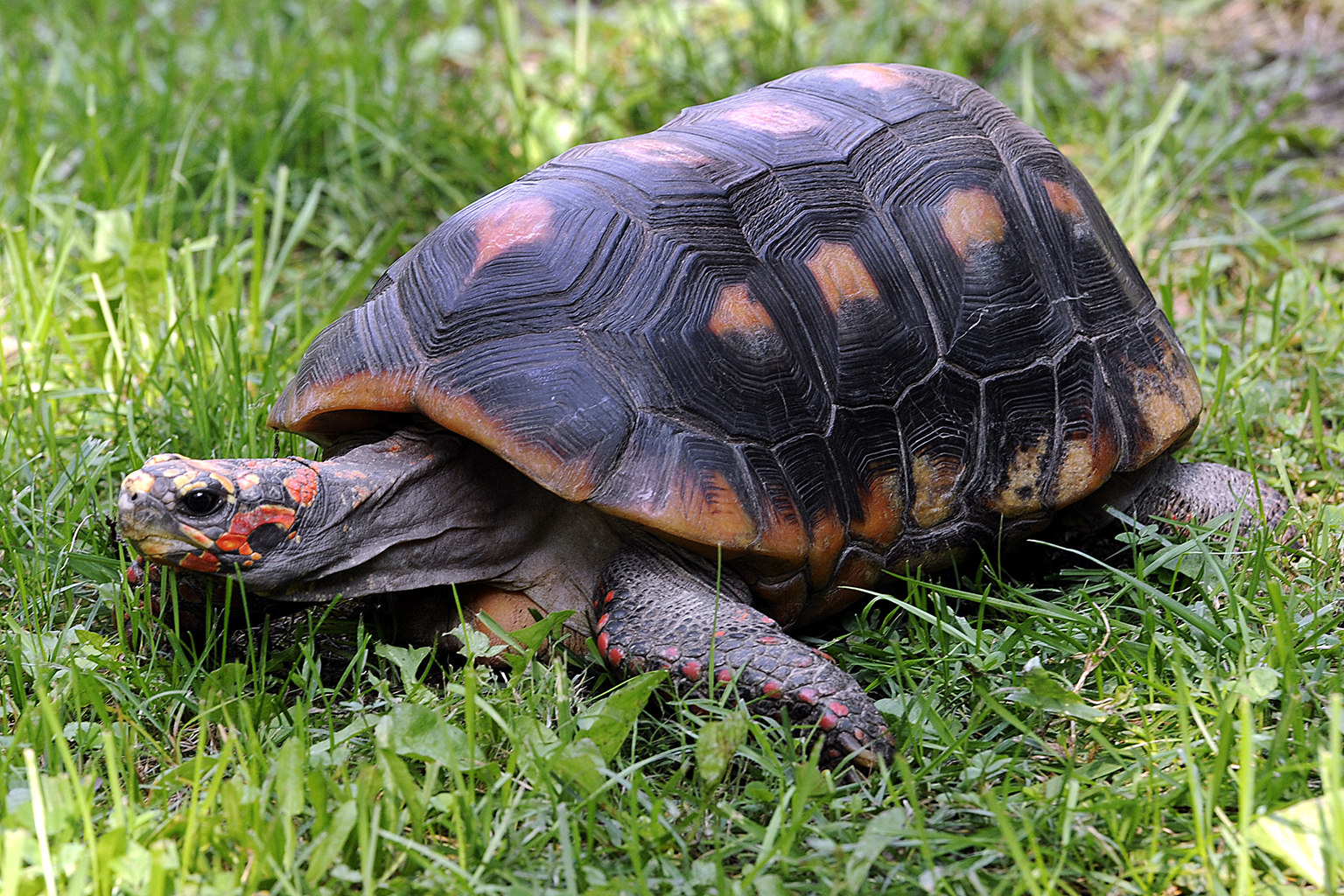RED FOOTED TORTOISE
Full Description
Red-Footed Tortoise Care Guide
Overview
-
Scientific Name: Chelonoidis carbonarius
-
Size: 10–16 inches (some up to 18″)
-
Lifespan: 40–60 years in captivity
-
Temperament: Generally gentle and curious
-
Native Habitat: South America (rainforests, savannas)
Enclosure
Indoor Setup
-
Minimum size: 8 sq ft per tortoise (larger is better)
-
Substrate: Coconut coir, cypress mulch, or organic soil (6″+ depth for burrowing)
-
Hides: Provide at least one humid hide and one dry hide
-
Humidity: 60–80%
-
Temperature:
-
Day: 80–86°F (27–30°C)
-
Basking Spot: 90–95°F (32–35°C)
-
Night: 70–75°F (21–24°C)
-
-
Lighting: 12 hrs UVB light daily (essential for D3 synthesis & shell health)
-
Ventilation: Important to prevent mold in high-humidity setups
Outdoor Setup (if climate permits)
-
Secure fencing: Tortoises dig and push
-
Shelter: Dry hide + moist microclimate area
-
Shade & sun access: Must regulate their own temp
Diet
Staple Diet
-
70–80% leafy greens (collards, dandelion, mustard greens, hibiscus leaves)
-
10–20% fruits (papaya, mango, banana, melon, strawberries)
-
10% protein (1–2x per week): boiled egg, low-fat dog food, earthworms, cooked chicken (small portions)
-
Avoid: Iceberg lettuce, spinach, cat/dog food with high protein, citrus fruits
Supplements
-
Calcium with D3: 2–3x/week
-
Multivitamin: 1x/week
Hydration
-
Provide shallow water dish (big enough to soak, not drown)
-
Soak juveniles 3–4x/week, adults 1–2x/week for 20–30 minutes
Cleaning & Maintenance
-
Spot-clean daily (feces, old food)
-
Deep clean weekly: refresh substrate, clean water dishes
-
Humidity control via misting or substrate moisture
Health & Signs of Illness
-
Healthy signs: Smooth shell growth, clear eyes, active movement, regular appetite
-
Common Issues:
-
Respiratory infections (signs: wheezing, bubbling nose)
-
Shell rot (soft spots, bad odor)
-
Pyramiding (lumpy shell due to poor humidity/nutrition)
-
Parasites (diarrhea, weight loss)
-
-
Vet care: Annual checkups; reptile/exotics vet only
Enrichment & Handling
-
Red-foots are intelligent and benefit from:
-
Exploring new safe spaces
-
Puzzle feeding (scattered or buried treats)
-
-
Handle gently and minimally to reduce stress

